An Outpost of Eurasia
Author: Chris Hann
March 7, 2016
Introduction: fulcrum of three continents
Cuba disguises its Eurasian identity quite effectively. The African origins of much of the population, their music, dance and religious practices, are incontrovertible. On a February Sunday in downtown Havana the Casa de la Música offers a choice between the rhythms of rumba early in the evening and those of salsa later on, when the audience has a somewhat lighter skin pigmentation. I experienced the former through a performance of Yoruba Arcana and was astonished both by the decibels of the musicians and by the energy of the dancers representing the odishas of Santería, the Afro-Cuban religion that persists vigorously alongside Catholicism.
Equally incontrovertible is the American origin of the colourful oldtimers which pollute the streets of downtown Havana, not to mention US plugs, and baseball on primetime television. Washington was the imperial power for sixty years, until Fidel Castro and his fellow revolutionaries mobilized the population to overthrow Batista’s regime in 1958. Dramatic moments followed in 1962 when President Kennedy resisted Khruschchev’s deployment of nuclear missiles in a state which had by now committed itself to the Soviet bloc. In the decades that followed it was no easier for Western anthropologists to gain access to the grass roots of the Cuban socialist experiment than it was in the Soviet Union itself. When the bloc collapsed in the 1990s, taking with it the island’s economic lifeline in an increasingly globalized world economy, many observers predicted the imminent demise of Cuban socialism. But the state survived the crisis of the early 1990s and, more than a decade after illness obliged Fidel to step down, socialism in Cuba still appears resilient. I felt this on the evening I arrived at José Martí international airport, as I waited three quarters of an hour for immigration checks, then more than twice as long for my suitcase to be delivered, and finally another half hour to change Euros into CUCs (divisa), the nominally convertible version of the Cuban currency on which foreigners must rely. Yet I learned in the following days that the allure of American capitalism is again becoming strong, threatening to terminate the experiment with Eurasian socialist ideology.
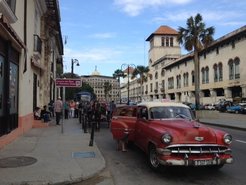
Déjà vu
I was not quite a normal tourist. I stayed in Havana for just under a week on the invitation of the US anthropologists Don Nonini and Ida Susser, on behalf of the “Committee for Global Transformations and Marxian Approaches” of the International Union of Anthropological and Ethnological Sciences. They had secured funding from the Wenner-Gren Foundation in New York to organize a workshop with Cuban colleagues at the Juan Marinello Cultural Research Institute, who in recent years have become increasingly accustomed to welcoming foreign guests. The workshop theme was “The anthropology of the politics of scale” and I shall come back to the academic exchanges below.
For me, the Guidebook warnings of a “timewarp”, exemplified by the garish oldtimers which still play a significant role in Havana’s transport system, had an extra dimension. Again and again, I had a sense of déjà vu because many details of everyday life reminded me of Hungarian socialism in the 1970s. It was not just that Soviet Lada cars and Hungarian Ikarusz buses were also numerous on the streets (albeit less conspicuous than the Oldsmobiles). Socialist architecture in Havana struggles to impress in comparison with the old colonial houses and hotels in much the same way as the new realism in Budapest when set alongside the bourgeois heritage of the Habsburg era. Decades of neglect have had far more serious consequences for the urban infrastructure in Havana. Although progress has been made in renovating UNESCO heritage sites in the old town, it is said that 80% of the urban fabric in the city centre has not been touched since 1958. The main cause of the general dilapidation is known to all: the US embargo is publicised prominently on billboards as the “longest genocide in history”.
Yet much has changed in recent years, and here too I was struck by the similarities to late socialist Hungary. The state has devolved considerable economic freedom to the private sector, mainly in the form of cooperatives that operate according to the logic of markets rather than central planning. Goods and services missing in the state sector can often be found here, though of course they are much more expensive. Apart from the legalized private sector, many Cubans need to be active in grey zones of informal economy to augment their formal sector incomes. The dual currency system and massive boosting of tourism in recent years open up opportunities, but at the same time they expand the opportunities for corruption and raise searching questions about socialist ethics. Do the innovations “lubricate” the centrally planned economy or do they stimulate the theft of public property and undermine solidarity (cf. Hann 1990)?
The poor facilities at the Juan Marinello Institute’s splendid building, once a private villa, seemed to exemplify the problems. While waiting for the speakers to arrive, I watched the chickens in the yard and a brigade of young men trimming a large expanse of grass across the road – by hand with small scythes. Senior researchers earn the equivalent of thirty dollars a month. Even if some nowadays receive a bonus paid in convertible pesos, and even with ration cards for a few basic goods, few can get by without constant strategizing and moonlighting. Such cards existed in Romania and Poland in the 1980s, but they were unknown in late socialist Hungary, where there was only one version of the Hungarian forint and virtually all goods could be purchased with it. As in Hungary before 1990, it is not advisable to be unemployed in Cuba (I was told this by Luisa Steur, who does research with Havana’s street sweepers). But for some Cubans now, as for Hungarians then, the formal job is little more than a paper commitment that is either irrelevant to one’s main sources of income, or (better) opens doors directly to more or less illicit but lucrative sideline activities. To take one simple and entirely legal example: you can make good money by letting out rooms to foreign tourists, or moving out to live with your parents in order to let your whole apartment. But what are the implications of these developments, not to mention all the inequities generated by remittances from the US, for the work ethic and for moral economy more generally?
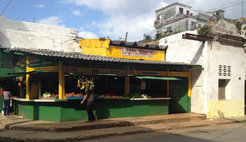
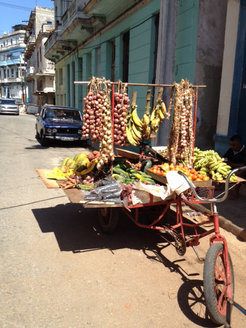
Intellectuals and society
In airing these and other problems at our meeting, Cuban researchers of varying age and seniority offered mainly “leftist” criticism. Some of our hosts at the Juan Marinello Cultural Research Institute deplored “technocratic”, “capitalist” tendencies that were obviously parasitical on their high-minded state. Senior Researcher Dmitri Prieto Samsonov (who spent his childhood in Moscow, before his mother moved permanently to the island with her Cuban husband) went so far as to argue that the Cuban working class today is experiencing a new form of precariousness. Prieto, who studied legal anthropology at the London School of Economics, has considerable freedom to publish such arguments. In one conversation he could switch rapidly from debating the precariat among industrial workers to the ontological turn in Anglophone anthropology and Eurasianist ideologies in Russia. Such breadth seemed remarkable in view of the fact that scholarly infrastructure is little better than that of the housing and roads; even internet access remains extremely limited. We were joined by students from Havana University for the final public session, at which David Harvey elaborated capital’s endless ingenuity in pursuing “accumulation by dispossession” (Harvey 2007). He urged everyone to devote the same attention to volume 2 of Marx’s Capital because the politics of realisation were just as important as the politics of production, the main subject of volume 1.
Some subjects are still controversial in Cuba. They can only be aired in small workshops like ours and in scholarly publications: the mass media remain carefully controlled. One young researcher, employed in the Cátedra of the Institute named after Antonio Gramsci, was writing a social history of the consolidation and dissemination of Marxism-Leninism in the 1960s - not as an antiquarian archival project but because of the relevance of the debates of that era to current policymaking and the forthcoming Party Congress. Another sensitive theme is racial discrimination, officially non-existent since 1962 but in reality a continuing source of tension that seems likely to grow if the island drifts further away from socialist redistribution towards the inequalities of market society (e.g. through the gentrification of old urban neighbourhoods in Havana). By contrast, religion has never been severely repressed. Santería flourishes in contemporary Havana and is considered to be a more appropriate subject for anthropological enquiry than political economy. Some suggested that the recent visit of Pope Francisco served to increase participation in practices that have nothing to do with Roman Catholicism, but which afford solace in times of increased uncertainty. The parallel forms of religion may merge indissolubly, like the parallel forms of economy.
I had neither the time nor the linguistic competence to ascertain if apprehensive views concerning the future of socialism were widespread in society. Iconic images of Fidel and Che are still to be seen everywhere; their works are marketed to tourists in many languages. Are they still revered, loved, and if so, by whom? I cannot say, but by chance, one evening following the conference, we stumbled upon a free street concert given by Silvio Rodríguez in a working-class barrio. Silvio (it is enough to mention his Christian name) is a greatly respected singer-songwriter and the narrow street was jammed. Before picking up his guitar for this intimate performance, the former Member of Parliament made a lengthy moralising speech and presented a local cultural activist with some sort of certificate of merit. Where a European audience might have shown its frustration, the Cubans of this barrio listened respectfully. No doubt they have to be patient in many other contexts – attending meetings of the Committee for the Defence of the Revolution (CDR) in the block where they live, harangued by long speeches at political rituals at schools and workplaces, standing in line for scarce goods, or making complex deals to obtain them through the informal sector. These rhythms have consequences. Cuban colleagues at the Juan Marinello Institute largely ignored Western conventions of academic timekeeping, which surprised some harried foreigners who have learned about time-space compression from Harvey and have trouble in adjusting to those who fail to practise it. In any case, Silvio’s audience waited patiently for his performance to begin. It seemed to me that some of his songs might be too didactically political for audiences elsewhere. But I noticed that many sang along that evening, Cubans of all ages, genders, and skin colours, emotionally engaged in ways that Mick Jagger will not be able to engage his audience during the Stones’ free stadium concert in the following month.
Cuban socialism, then, seems deeply rooted, and it has an impact on values and lifestyles. Taxi drivers are hardly representative but one thing they seemed to have in common (apart from not having meters and not issuing receipts) was a certain socialist nostalgia: one driver praised East Berlin as the most perfectly organized city he had ever visited, while another was proud of his veteran’s record in Ethiopia. The trivial daily inconveniences that I experienced are surely insignificant when compared with the unambiguous message of Cuban statistics in domains such as healthcare, education, employment, nutrition, longevity and environmental protection. Planes sprayed chemicals over the city at dawn during my stay to avert the Zika hazard and on a weekend afternoon I was disturbed by a very thorough fumigation squad, who moved from apartment to apartment accompanied by the CDR representatives. The paternalist socialist system serves most of its population much better than capitalist systems throughout the Global South. The Gini coefficient that measures inequality is still the envy of social reformers everywhere. So why change anything?
A preliminary response would be to declare some of these statistics suspect if not entirely spurious. As David Harvey pointed out during our discussions, such comparisons are predicated on processes of scale-making which themselves need to be questioned, including the adequacy of taking the state as the key statistical unit. A second response might be that, with oil supplies from Venezuela drastically cut back following the death of Hugo Chavez, the Cuban leadership no longer has any alternative to a rapprochement with the US on basically capitalist terms. But the more worrying answer might be that our academic interlocutors at the Juan Marinello Institute were not Gramscian organic intellectuals at all, and that their public utterances did not reflect the wishes of the Cuban people themselves, who on the whole show signs of desiring changes in the direction of market liberalization. Above all, they desire more of the goods that their relatives in the US have. Harvey, following Karl Marx, deplores this commodity fetishism and would prefer Cubans to enjoy more free time instead. But they themselves might have a different conception of their needs and prefer, perversely, to lock themselves into senseless consumerism.
The pattern is not new. In my contribution to the post-workshop discussions, I described its manifestations in Hungary in the 1970s, and traced its origins back to the status differentiation generated by the urban revolution of Bronze Age Eurasia (Goody 2010). Academics from the wealthy capitalist North are in no position to rail against this consumerism. It is not so long since Western leftists bemoaned the fact that most of the East Germans who voted for unification after tearing down the Berlin Wall were more interested in shopping than in democratic ideals. One of the youngest researchers at the Juan Marinello Institute, a recent graduate in sociology, asserted with a broad smile that Cubans were second to none in this regard. Consumption and consumptive production (rather than production and productive consumption) seem to be the key to social reproduction in all contemporary societies, just as they were (in very different forms) to social reproduction in the pre-capitalist gift economy (Gregory 2015). I wondered if some of the Institute’s researchers might in due course use their talents to become successful entrepreneurs.
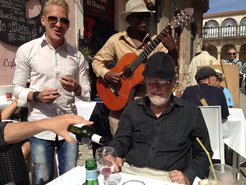
Conclusion: accumulation by postsocialist dispossession
My visit to Havana prompted these general reflections on a very uncertain situation. Perhaps more compromises can be struck and syncretic forms of socialism will proliferate, analogous to the religious and racial hybridities of the island. Some Cubans apparently look to Vietnam as a positive model of transition (the word transition, I was told, is officially still taboo). China no longer has many admirers here. I would argue that some sobering and instructive lessons can be learned from late socialist Hungary. After all, having voted out their previous masters in the first free elections of 1990, the Hungarian electorate voted them back to power at the very next opportunity in 1994; of course, by then the genie was out of the bottle, and later developments in Hungary (reviewed at the Havana workshop by Don Kalb) illustrate the malignant potential of what Karl Polanyi (1944) termed market society’s “double movement”.
A healthy balance between redistributive bureaucracy and the market remains elusive everywhere, in democracies as under one-party regimes. The near future in Cuba seems sure to bring a lurch towards the market and greater inequality, but I doubt that this will spell the end of this Eurasian socialist experiment, which has stronger local roots than the Soviet variants I used to know in Eastern Europe. Whatever they do in the future, I was impressed that Cuban academics in the Cátedra named after Gramsci could, despite their meagre salaries, speak up powerfully in defence of the values of their revolution. Even if US capital transforms Havana through new processes of “accumulation by postsocialist dispossession”, in the course of which the books of Fidel and Che are pulped, the memories of millions of Cubans who benefited from their policies will remain; as will the songs of Silvio.
References
Goody, Jack 2010. The Eurasian Miracle. Cambridge: Polity Press.
Gregory, C. A. 2015. Gifts and Commodities (2nd edition). Chicago: Hau Books.
Hann, C. M. 1990. ‘Second economy and civil society’, Journal of Communist Studies 6 (2): 21-44.
Harvey, David 2007. A Brief History of Neoliberalism. Oxford: Oxford University Press.
Polanyi, Karl 1944 The Great Transformation. The political and economic origins of our time. Boston: Beacon Press.
Appendix
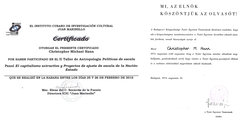
At the end of the workshop in the Juan Marinello Cultural Research Institute, all participants received a Certificate confirming their participation. The author was reminded of the last occasion he was awarded such a document, in 1974 from the Karl Marx Economics University in Budapest (right).




